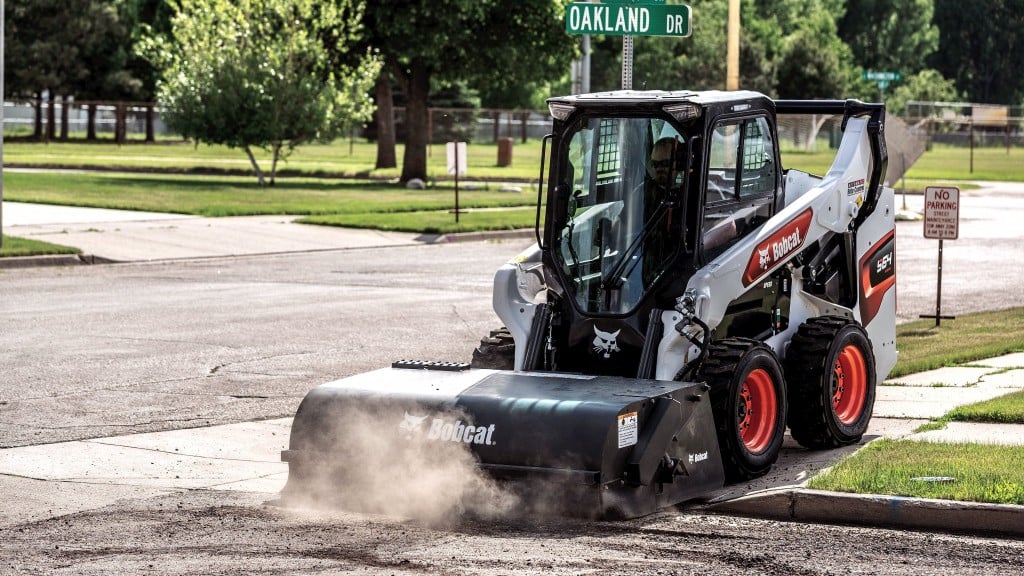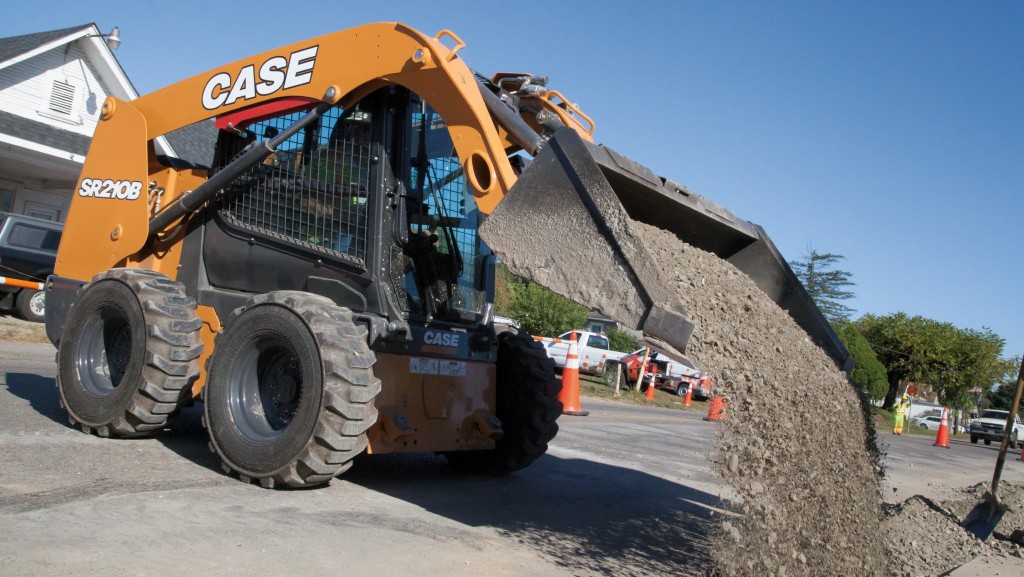11 things to consider when buying a skid steer loader
Buying tips to help you pick the best machine for your needs

A skid steer loader is a versatile machine designed for productivity in a range of applications, including carrying materials, roadwork, landscaping, earthmoving and snow removal. Manufacturers offer these machines in various sizes and typically offer many options in engine horsepower, hydraulic flow, rated operating capacities, operator comfort and so on. But with so many models and options to choose from, what are the most important things to consider when choosing a skid steer for your fleet?
Heavy Equipment Guide has put together a list of questions to ask yourself when purchasing a skid steer to ensure you pick the best machine to meet your needs. To find out more about the latest skid steer releases and their key features, check out our 2020 roundup guide.
What type of applications will you be using your skid steer in?
Knowing what kind of applications you'll be using your skid steer in will help you determine if you need a larger machine with a higher level of rated operating capacity and pushing force, or a slightly smaller machine to move in tighter spaces. Answers to these questions will influence the choice in skid steer size and performance needs.
What kind of rated operating capacity do you need?
The ROC describes the size of the load that the skid steer is able to safely lift before tipping. To determine the ROC, the skid steer bucket is fully extended and filled with weights until its rear wheels lift off of the ground. That weight measurement is the skid steer's tipping load, which is then divided in half to determine the ROC. When shopping for a skid steer, aim for a unit that has a rated operating capacity that is equal to or above the lift weight that you expect to use for most jobs.
Do you need a vertical lift or radial lift arrangement?
It is important to understand the difference between vertical lift and radial lift arrangements. This will further help match the skid steer to the job. Operators that do more grading and dirt work tend to prefer the radial lift design as it generally has greater bucket attachment breakout and lift arm forces. Radial lift loaders also have excellent mid-height reach due to their lift path. Operators who primarily do load and carry and truck loading prefer the vertical lift loader for its higher rated operating capacity and better reach at full dump height.
What type of attachments will be used with the skid steer?
Before you purchase a skid steer, consider deciding what attachments you may need in both the short and long term. The attachment requirements will impact the choice in size of machine, engine horsepower and hydraulic flow.
Larger models with engines greater than 75 horsepower (56 kW) typically have higher hydraulic performance to drive larger attachments. In fact, the largest portion of the skid steer market is made up of mid-sized loaders that have greater engine and hydraulic performance than small-frame machines. The mid-frame loaders are able to run a wider range of hydraulically driven attachments, which makes them more versatile and valuable to a contractor.
Which is better for your needs: a skid steer or a compact track loader?
While compact track loaders have overtaken skid steer loaders in market share, skid steers remain viable platforms for multipurpose use around any construction site. Especially when paired with the right attachment.
The primary difference between skid steer loaders and compact track loaders is the travel mechanism - tires vs. tracks. Skid steers are better suited for work on improved surfaces, while compact track loaders are ideal for low ground pressure situations, and working on finished lawns and environments with varied terrain. Understand the environments you work in most frequently and select construction equipment that will hold up best against your work.
Which cab features will keep the operator productive?
Cab comfort should be a consideration when looking at purchasing a skid steer. Is a closed cab with heat and air necessary because of the conditions the machines will be working in, or will a loader with an open cab suffice?
Does the skid steer have good sightlines for safe operation?
A skid steer should deliver excellent sightlines to all areas around the machine for maximum efficiency and safe operation on the construction site. Look for additional features such as backup cameras and sensors that detect workers and objects in blind spots.
Does the skid steer have any features that increase efficiency for frequent tasks?
Consider if features are available that assist with frequent tasks the driver may be doing such as dual-direction self-levelling for material loading/handling, return-to-dig for truck loading cycles, or creep speed control for a high-quality finish and maximum productivity with attachments such as brooms, trenchers, box rakes, milling heads, wheel saws, etc.
Do you have any size job site restrictions that need to be taken into account?
If the skid steer will be operating in tight or confined spaces, small-framed skid steers are something to consider. Ideal for applications such as landscaping, interior demolition and projects that require maneuvering around tight corners or narrow spaces, the dimensions of the skid steer also make it easier to transport heavy equipment between construction sites.
If space is not an issue, many contractors opt for a mid-size skid steer as they can power a majority of attachments and are suitable for most construction applications. For heavy-duty applications such as large demolition jobs, a large-frame skid steer would be an ideal choice.
What are the transportation requirements?
The bigger the equipment, the heavier the load for any trailer transporting your machinery to and from jobs. Make sure that the transport and towing vehicles are the proper size and capacity for the weight of the skid steer and attachments being transported. Additionally, make sure ramps are strong enough, and avoid wood ramps that can break and cause personal injury.
What are the maintenance requirements for the skid steer?
Consider access for daily service and routine maintenance items to keep the skid steer working at its maximum performance. Daily checks/fill items, such as engine oil, should be easy to accomplish without having to reach into areas where components may be hot.
Routine maintenance items, like cleaning/replacing the engine air filter should be quick and simple without requiring bolts/panels to be removed. Other routine maintenance items, like the fuel filter or hydraulic filter, should be straightforward to locate and access without requiring other components, like cabs or cooling cores, to be unbolted and moved.


